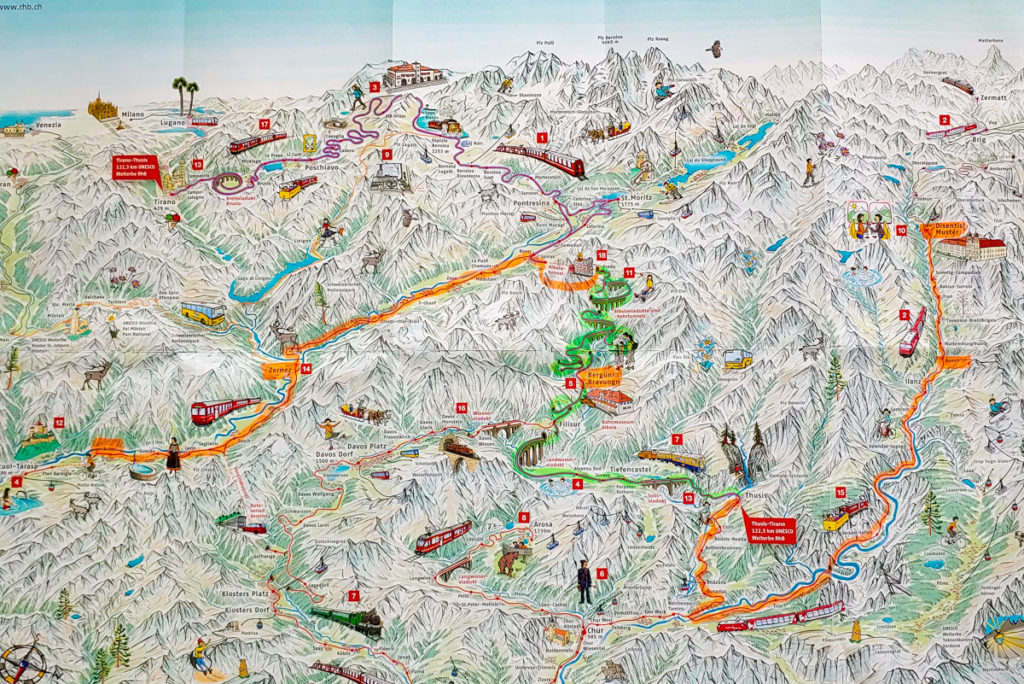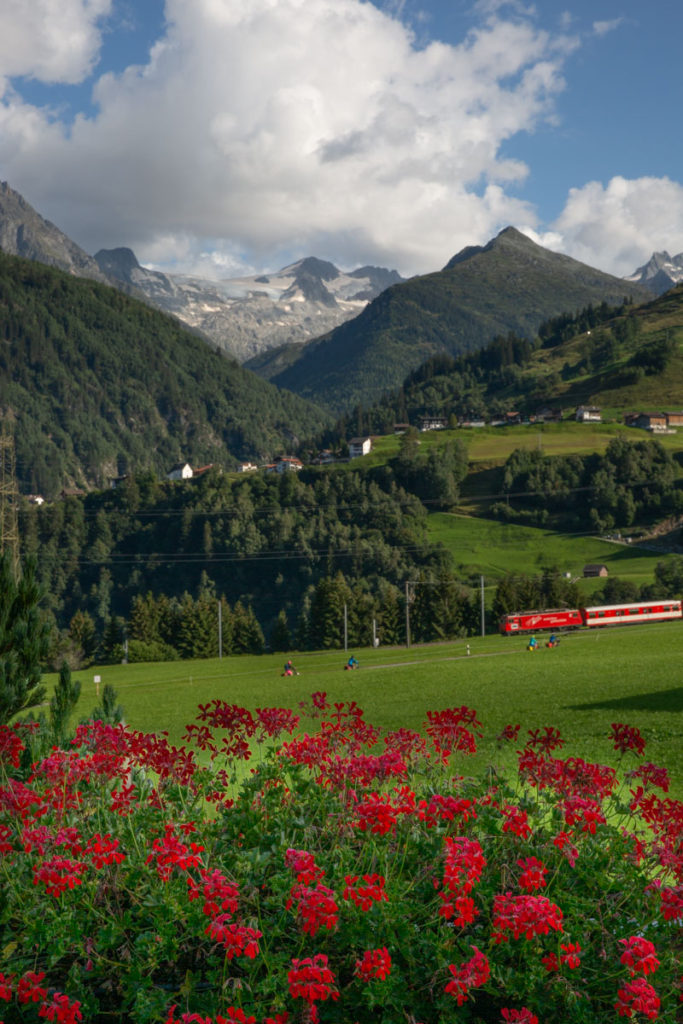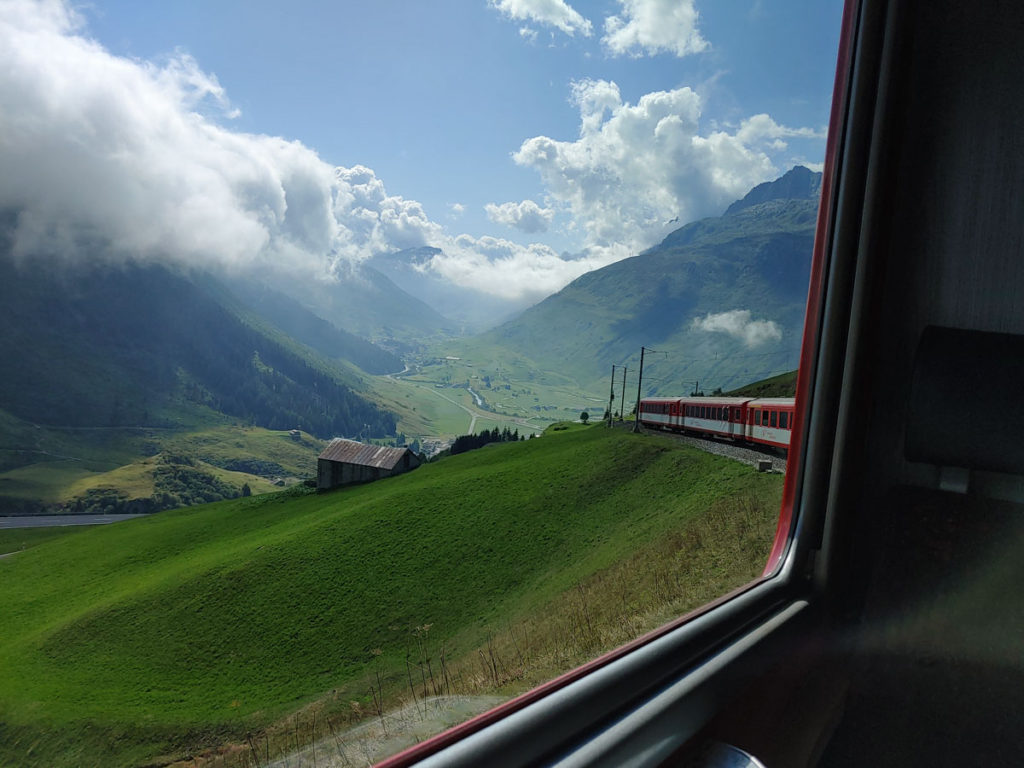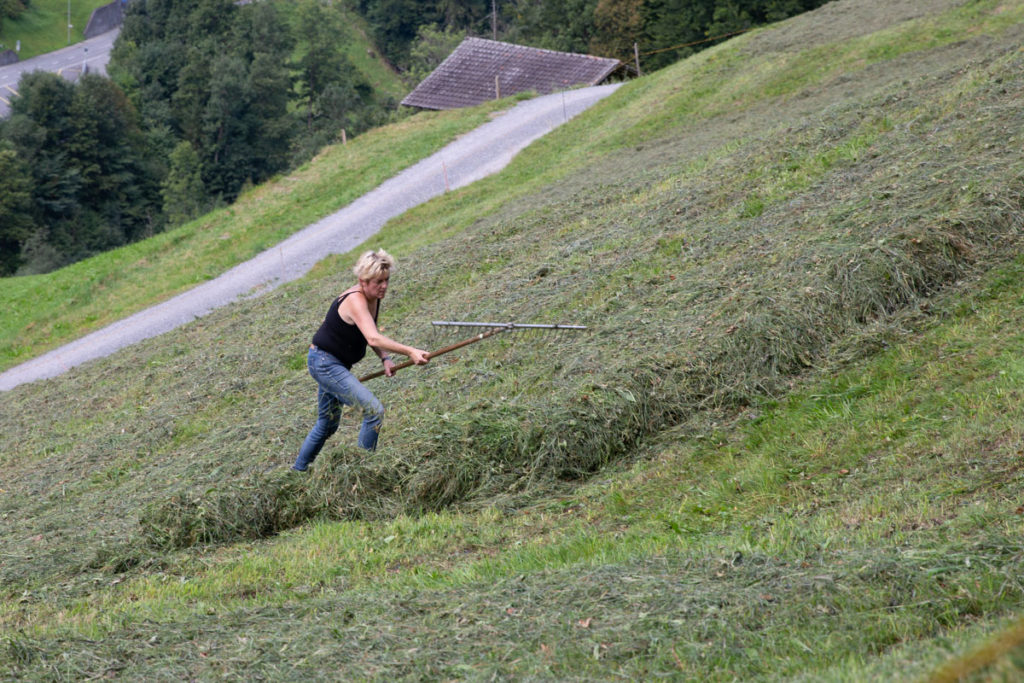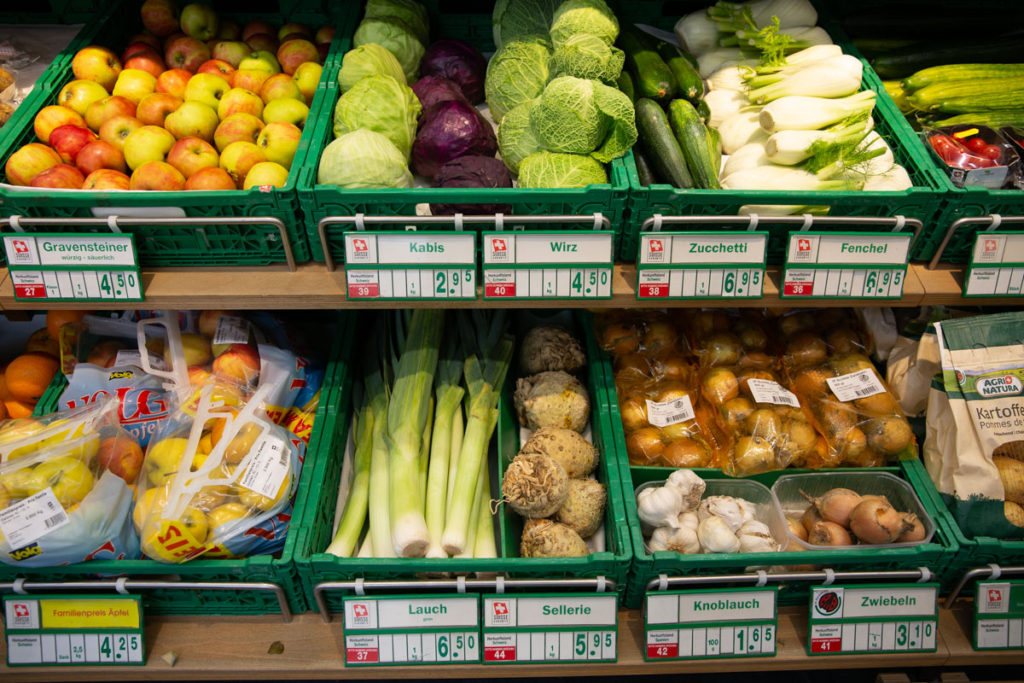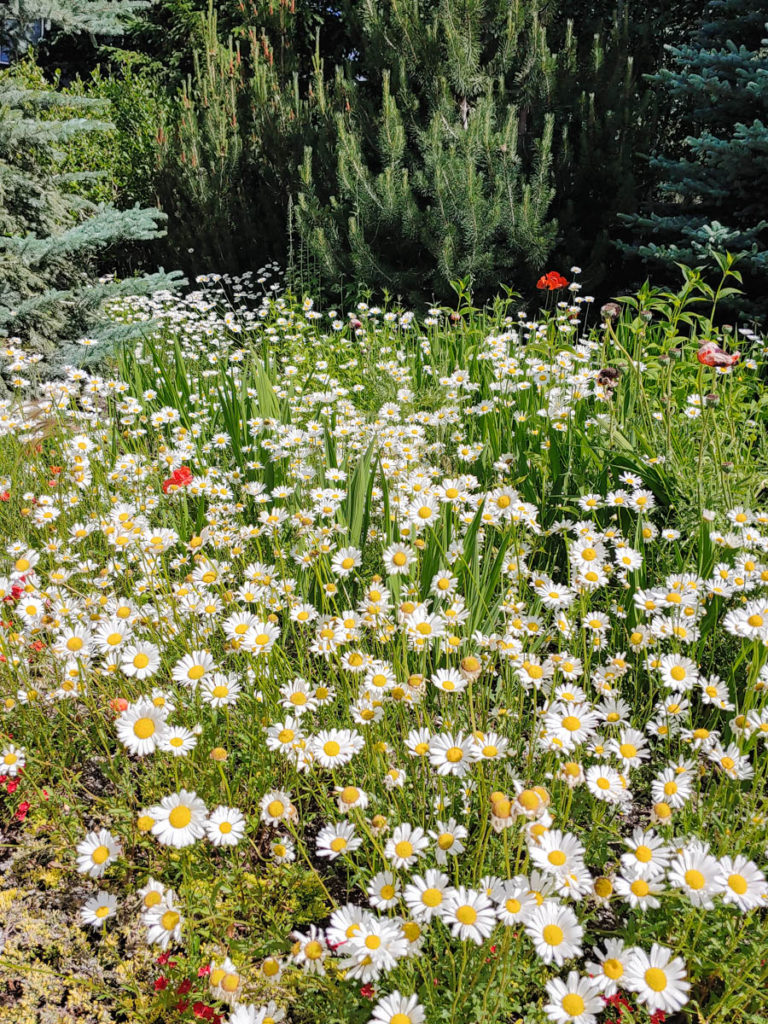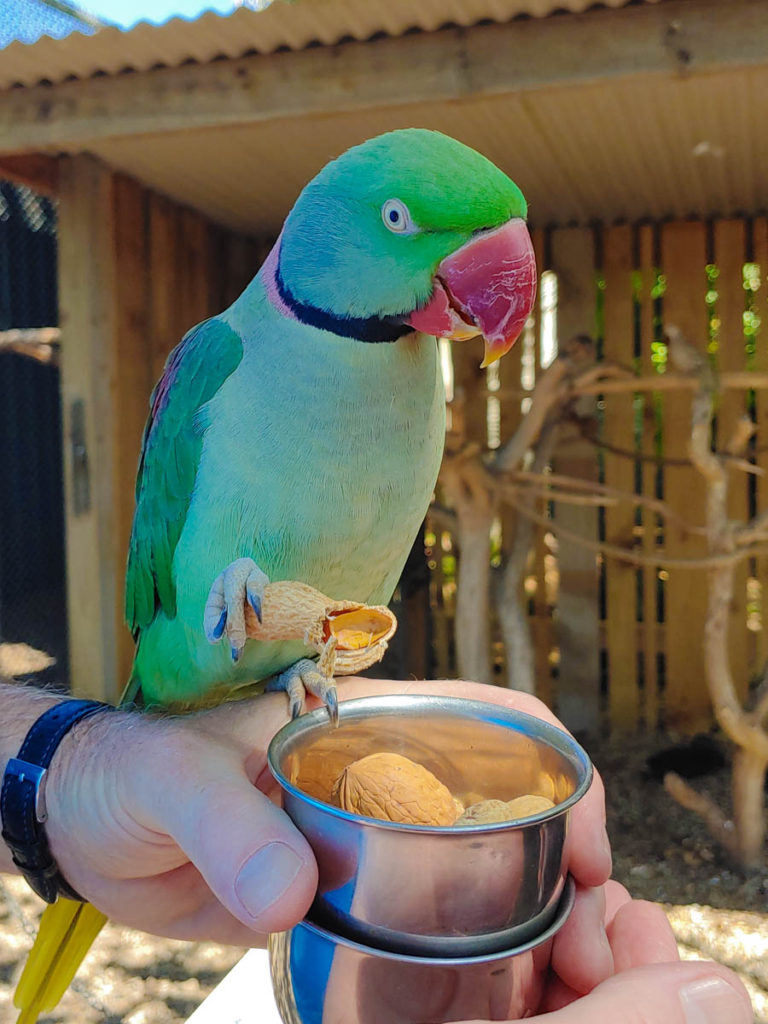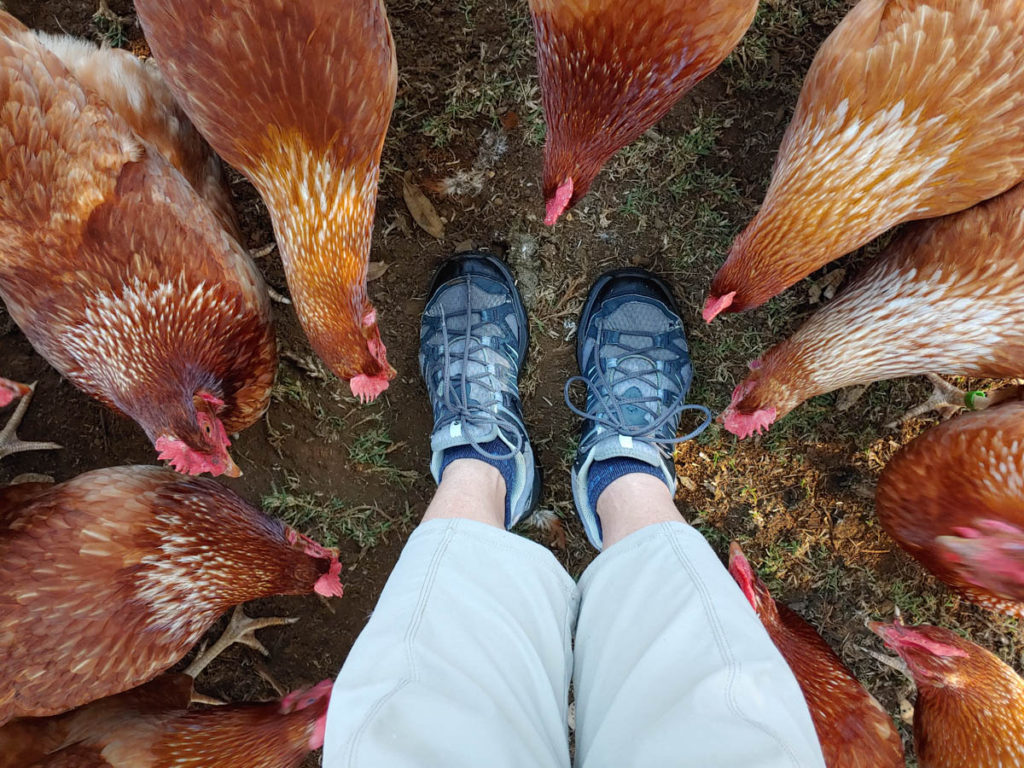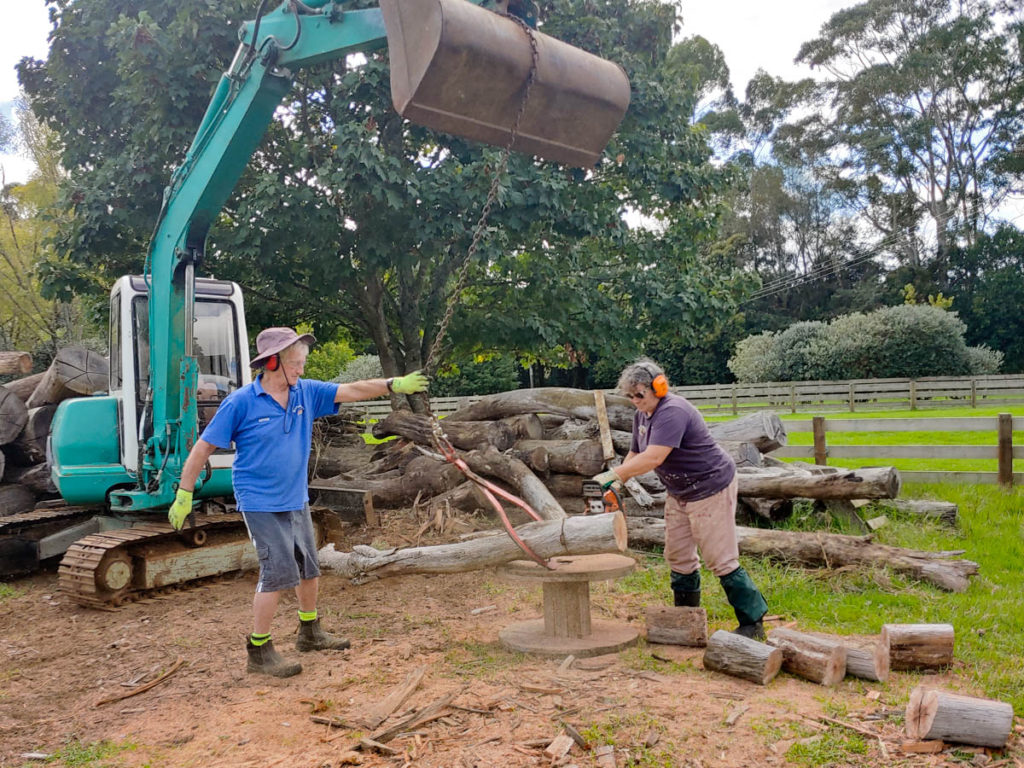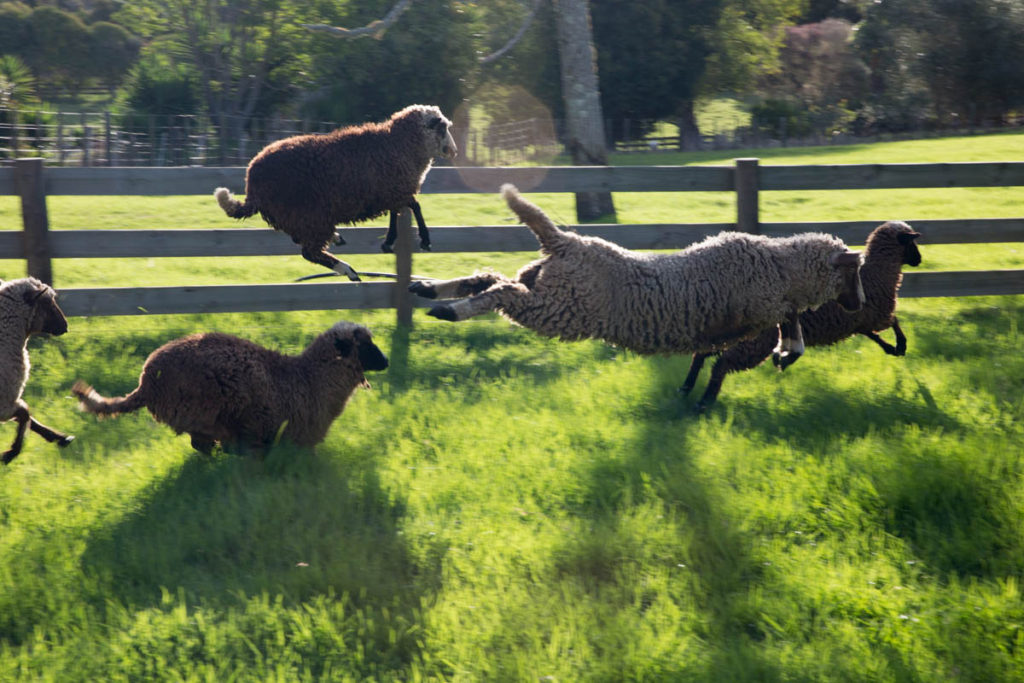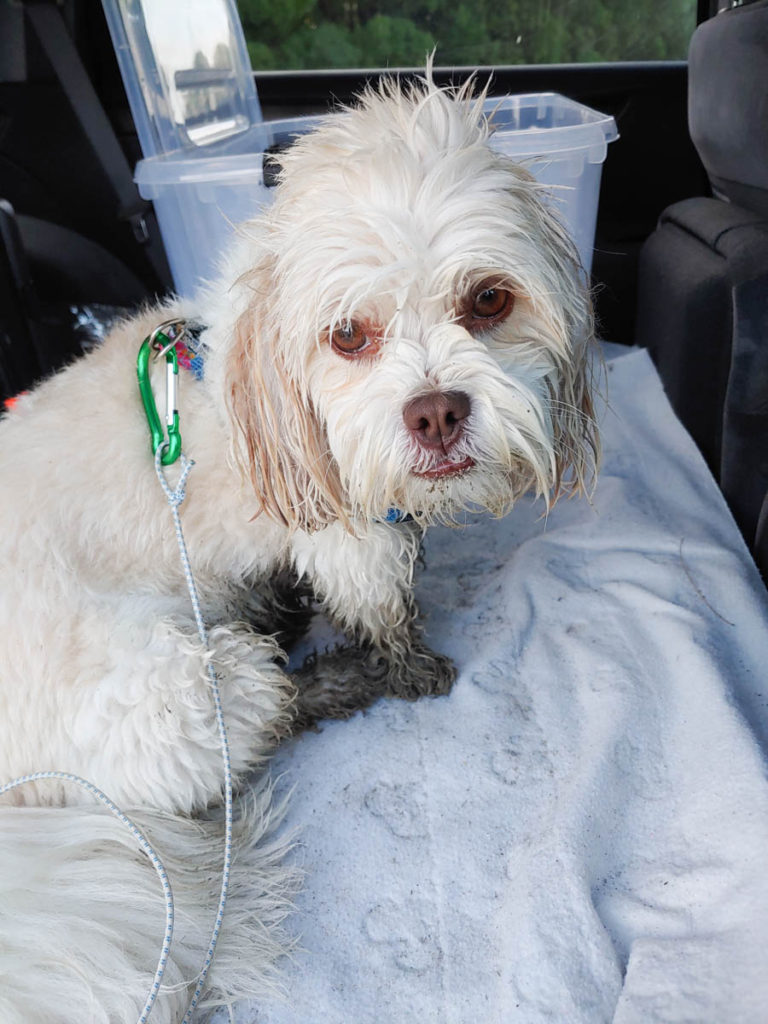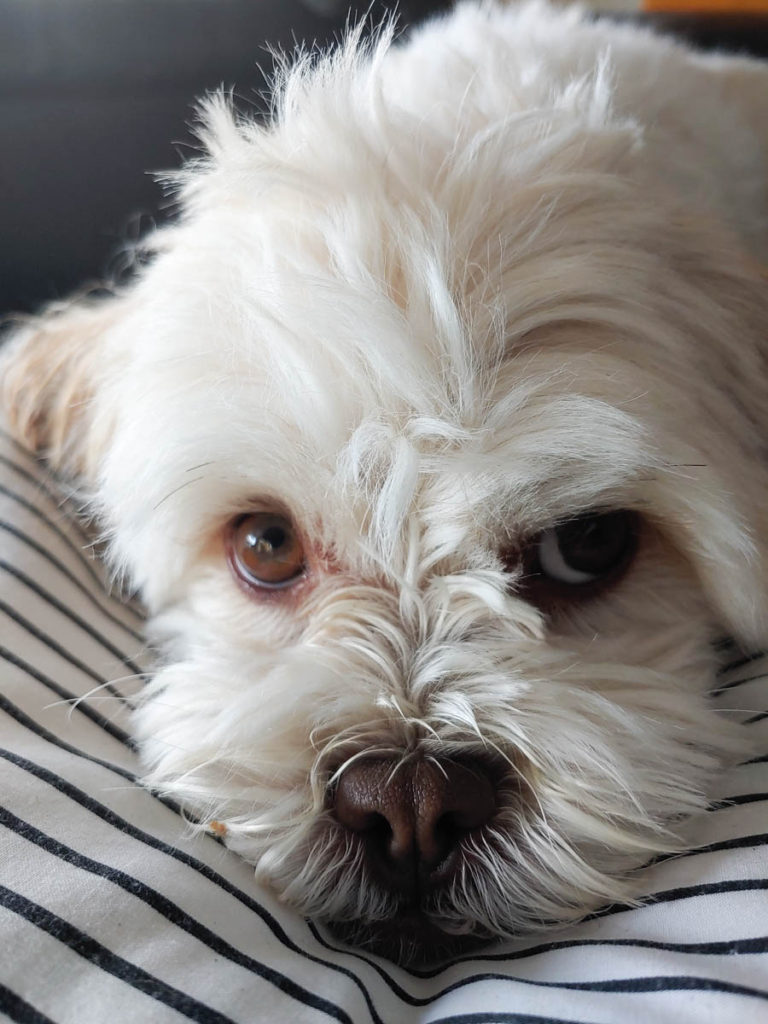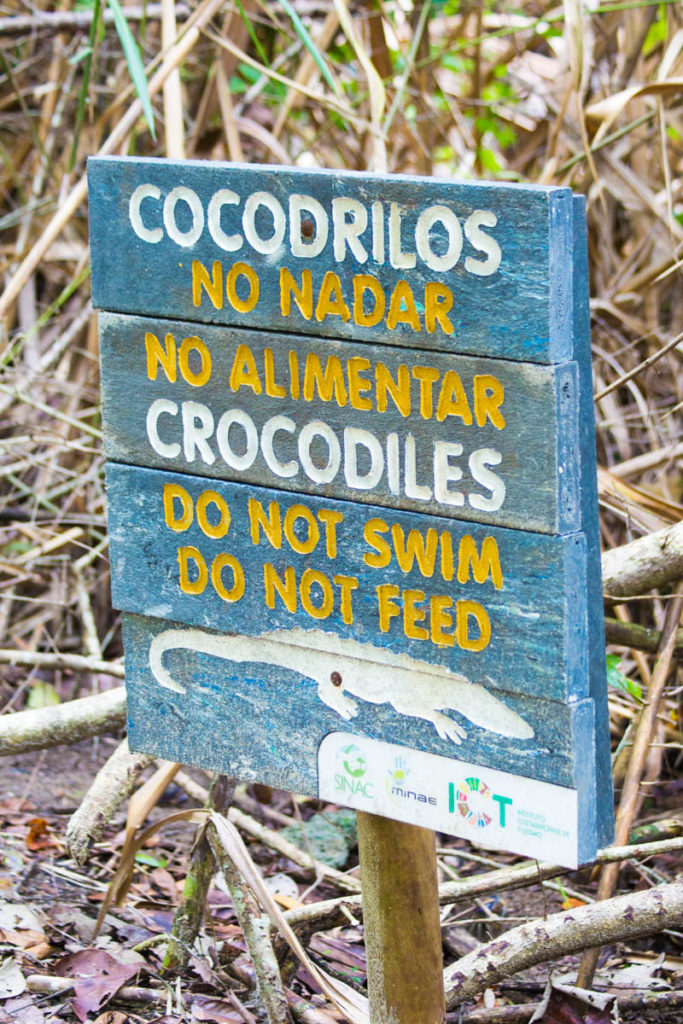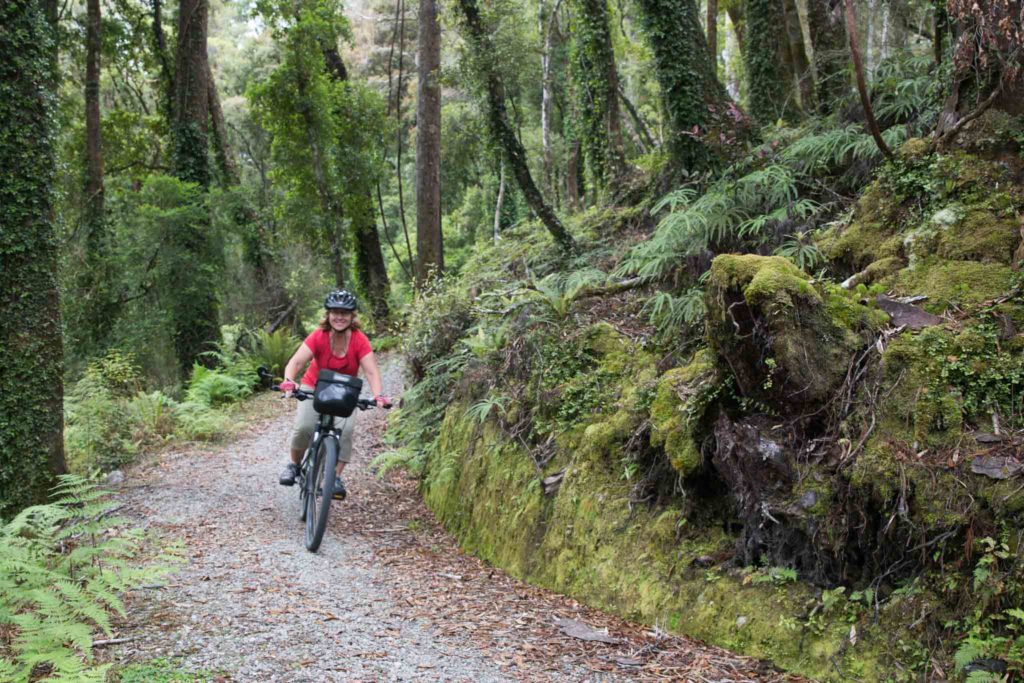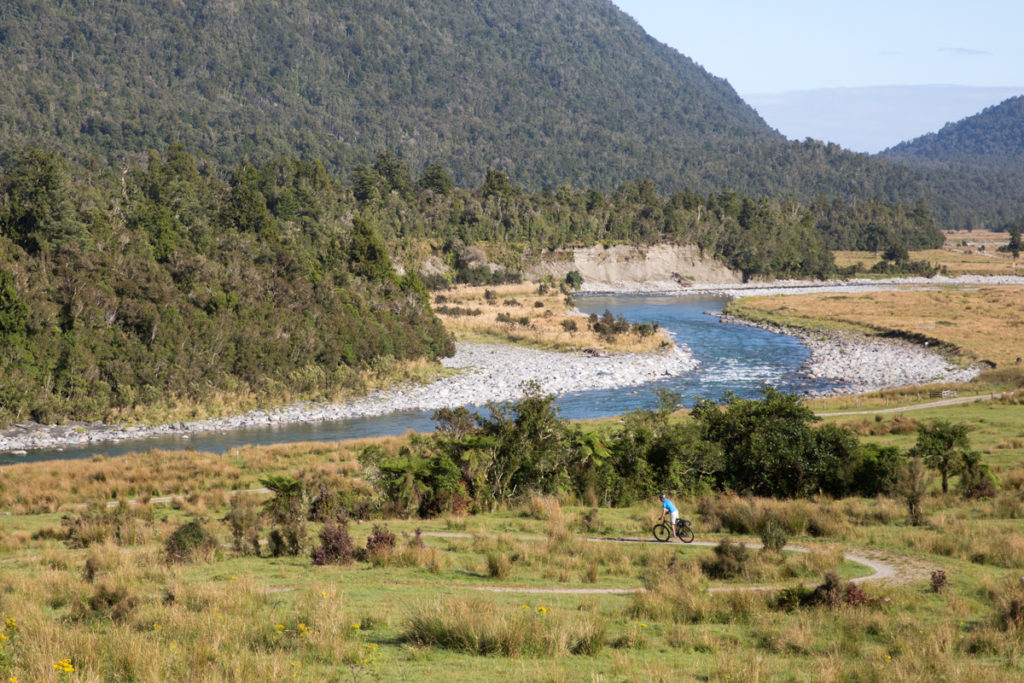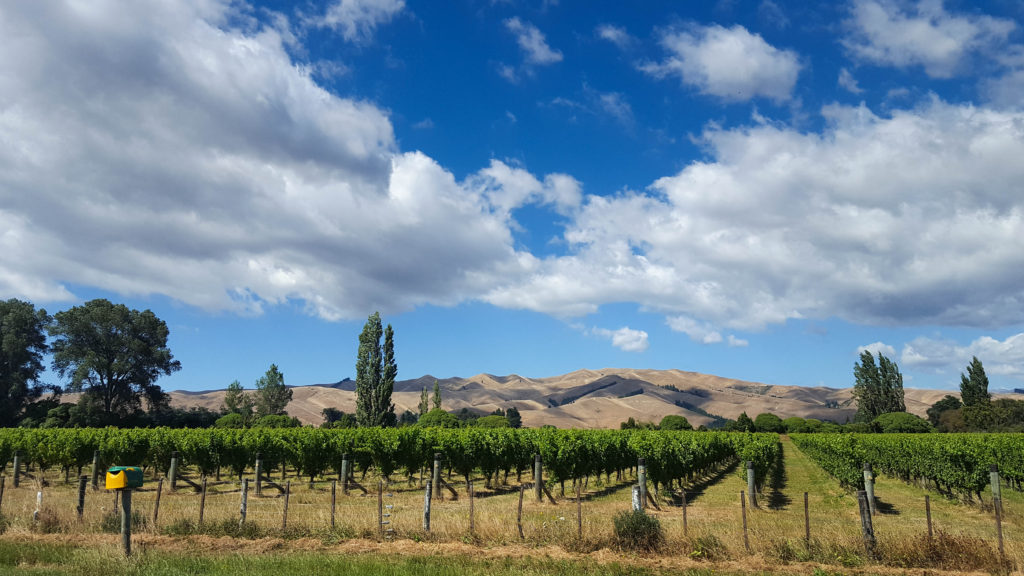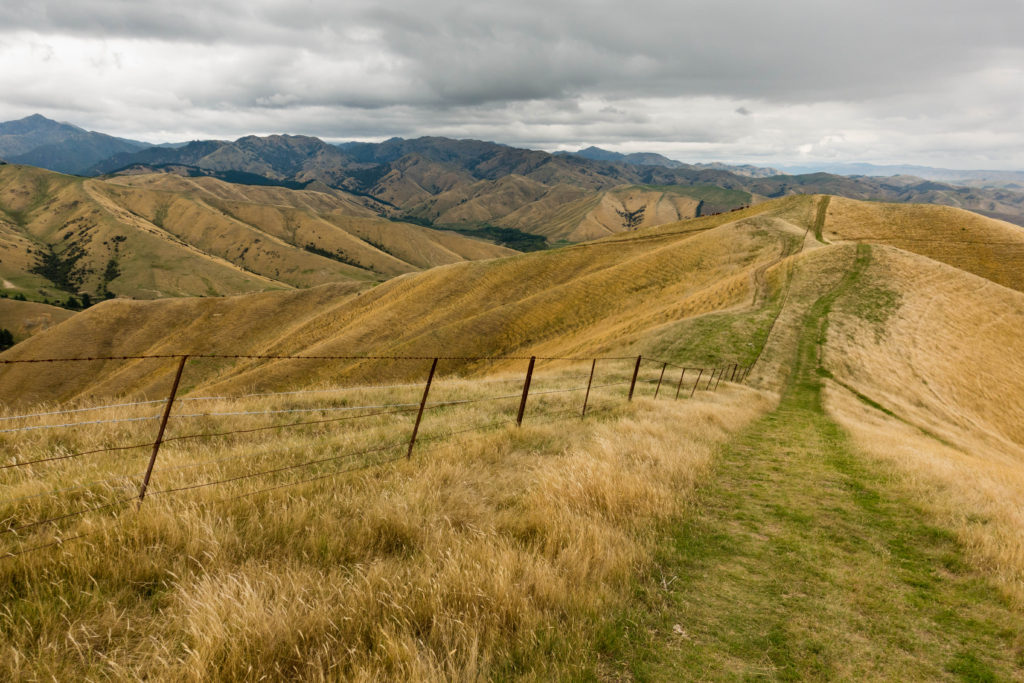People in Huts
New Zealand is chock-full of hiking trails, the longest being the Te Araroa stretching from the northern tip of the North Island to the southern tip of the South Island for a total of 1,864 miles. Jim and I didn’t have the 4-6 months it takes to complete the Te Araroa, so we settled for two nights on the Abel Tasman Track. This track is one of New Zealand’s “Great Walks” which means the walking path is maintained to a high standard. It also means that it is popular and often crowded.

The Abel Tasman Track, a 37 miles (60 km) trail, meanders on beaches and over coastal mountains. Although it is normally a 3-5 day hike, we could only get reservations at the northernmost hut, the Whariwharangi Hut, where we stayed two nights. As expected, the 20 beds in the hut were filled both nights. In most New Zealand huts, you sleep sardine-style, all in a row, right next to each other, on a long, raised plywood bed. Yet, Jim and I arrived early the first night so we were able to snag a rare accommodation – a private room with only one bunk bed. This didn’t mean that we had total privacy since the hut was a remodeled cabin from the 1800s and our room opened up onto the kitchen, the only space for socializing in huts.

This finally brings me to “people we meet”. On both nights, the hikers in the hut fell into two camps – the older (a.k.a. our age) locals who adore being in the NZ wilderness and the younger (a.k.a. fitter) people from around the world who have come to NZ to explore, and for some, work.

New Zealand has a program where young people from ages 18 to 30 can apply for work visas lasting up to a year. They mainly work picking fruit and vegetables on New Zealand’s many farms or in the hospitality/tourism businesses, one of NZ’s economic mainstays. Workers are allowed to find work that suits them and travel between work stints.
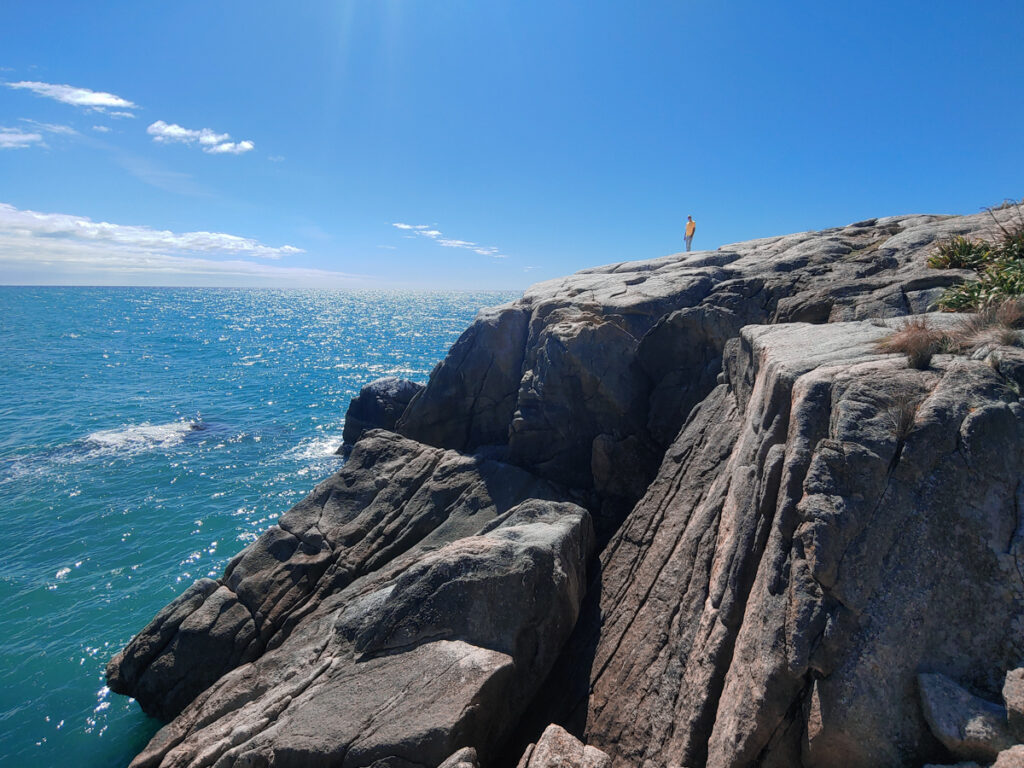
On our second night, I fell into conversation with three young women from Germany, Hanna, Lea, and Jule. They were quieter than the other world travelers so I gravitated to them, being a former quiet and shy person myself. Yet these gals were nothing like I was at their age. When I was 18, I was doing what my parents and society expected of me. These young women were truly exploring.
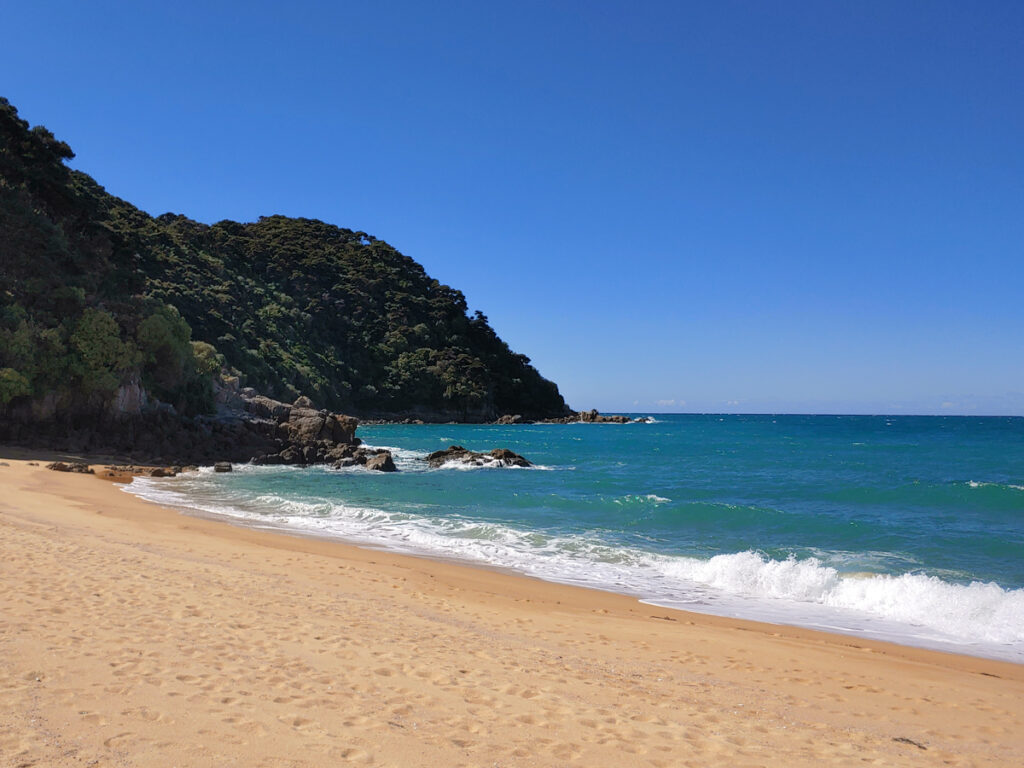
After high school (or gymnasium), at 18, Hanna, Lea, and Jule decided to take a year off before entering university and the world of work. They had spent the previous months at various farms picking fruit noting that having your hands over your head all day only hurts the first day. This alone proves they are much younger than me. They also navigated finding jobs, lodging, and transportation. In Germany, they relied on the public transportation system found in most European cities and towns so they weren’t accustomed to driving. Yet, in New Zealand, they managed to pay for and purchase a van, figure out New Zealand’s “rego” and “wof” requirements for vehicles, and most impressive of all, drive on New Zealand’s fast-paced roads. What probably helped them through these experiences was their accurate impression of New Zealanders in general – kind, easy-going, and helpful – which they are.


I asked Hanna, Lea, and Jule what they learned from their experiences in New Zealand. I thought they would say something profound and soul-bearing. Instead, they answered that they had learned the ropes of food shopping, cooking, cleaning, doing laundry, and driving. I am sure they did learn those critical life skills but I suspect their growth was deeper. When I asked to take their photo before everyone left in the morning, I asked them for two poses. The first one was the way they came into the country a year ago and the second was the way they are leaving. Their first photo shows three polite, yet separate and reserved young gals. The second shows relaxed, comfortable, and very connected young women. Subtle, but significant. I wish all three women more exploration and growth.
And here’s a secret – I wish that for myself too – even as an older woman.
